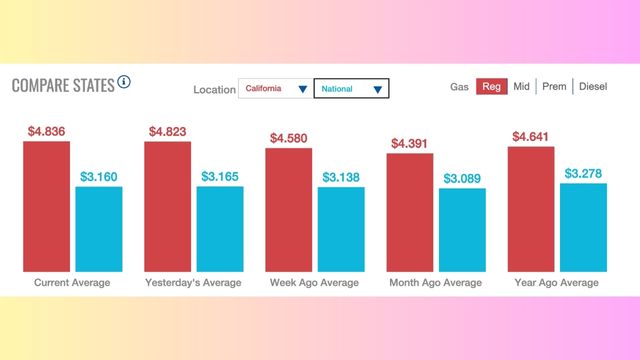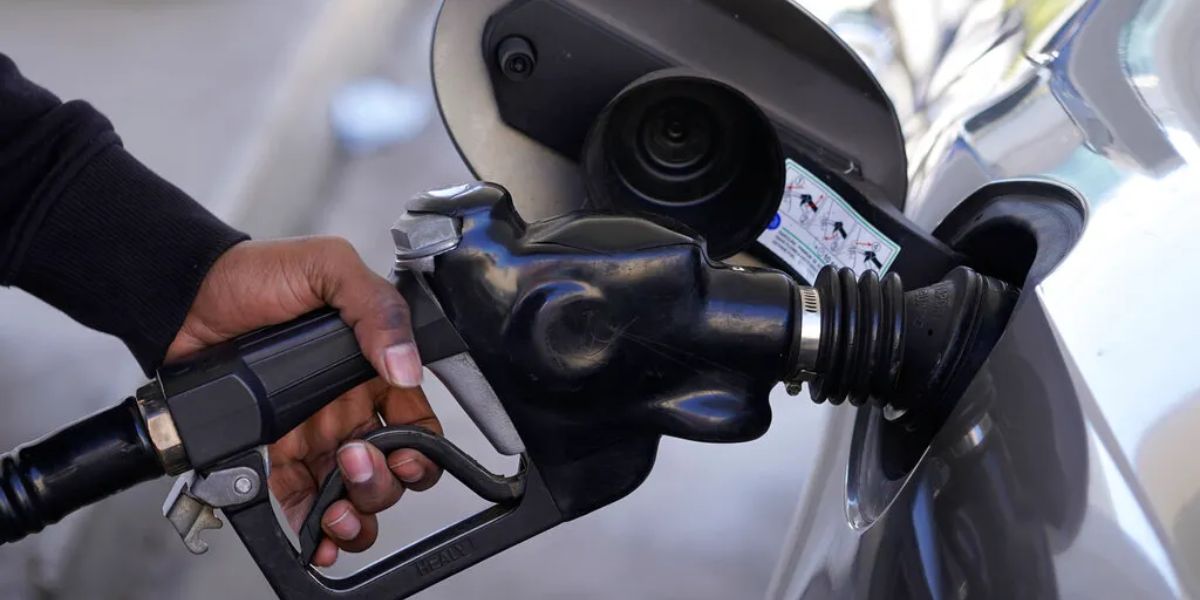In recent weeks, California’s average gas price has been steadily increasing and is now close to the startling $5 per gallon threshold. According to the American Automobile Association (AAA), the average price of normal gasoline in the state as of Saturday, February 15, was $4.84 per gallon.
This represents a notable increase of roughly 25 cents from the previous Saturday and a more pronounced rise of 44 cents from just one month earlier.
The yearly switch to summer fuel blends is one of the main causes of the increase in gas costs.
The demand for these seasonal mixes, which are needed for summer use and are designed to be more environmentally friendly, is forcing refineries around the state to shift production. According to AAA, one of the main causes of the price increases at this time of year is this transition. However, the rise in fuel prices has also been caused by other causes.
Fuel production in Northern California has been significantly impacted by the recent maintenance outage of a major refinery. The problem has been made worse by regular maintenance at a number of other refineries, which has resulted in a limited supply of gasoline and increased pump prices.
Californians now have much greater fuel expenses than they did a year ago as a result of this price increase. California’s average gas price on February 15 was 19 cents more than it was in 2024, when it was $4.64.

Many drivers in the state are experiencing financial strain as they go to the pump as a result of this hike. California’s increase is especially sharp, even though the national average has also increased over the past month by roughly 8 cents.
The California Air Resources Board’s (CARB) decision to approve a measure last year to lower the carbon intensity of fuels used in the state is another element at work.
In keeping with California’s aggressive environmental objectives, this bill aims to lessen the state’s reliance on fossil fuels and cut carbon emissions. CARB had cautioned, however, that this action would raise consumer gas costs.
Currently, the combination of this policy change, refinery problems, and seasonal changes is causing prices at the pump to rise quickly.
USDA Chief Proposes Sweeping Changes to Food Stamps – Say Goodbye to Sugary Drinks and Junk Food
The price hikes are not uniform throughout the state; in many metropolitan regions, gas costs are significantly higher than the average.
Prices are often highest in larger cities like Los Angeles and San Francisco, while they may be slightly lower in more rural areas. Notwithstanding these variances, the overall trend of price increases puts additional financial hardship on many households.
Californians are confronted with a challenging reality as gas prices continue to rise. In the upcoming months, there will probably be more difficulties at the pump as the state switches to cleaner, more sustainable gasoline sources.
2025 Driving Laws Overhaul: Say Goodbye to Vehicle Inspections in this State
Even though immediate expenditures may increase, the ultimate objective is to lessen the state’s dependency on fossil fuels and transition to a more ecologically viable future. Californian drivers are already struggling due to rising gas costs that don’t appear to be going down anytime soon.
Among them are:
| Location | Price (USD) |
| Los Angeles-Long Beach | $4.77 |
| Bakersfield | $4.645 |
| Orange County | $4.75 |
| Riverside | $4.66 |
| San Bernardino | $4.66 |
| Santa Barbara-Santa Maria-Lompoc | $4.74 |
| Ventura | $4.78 |
California presently holds the highest average in the nation, a title it often shares with Hawaii, according to AAA.








Leave a Reply